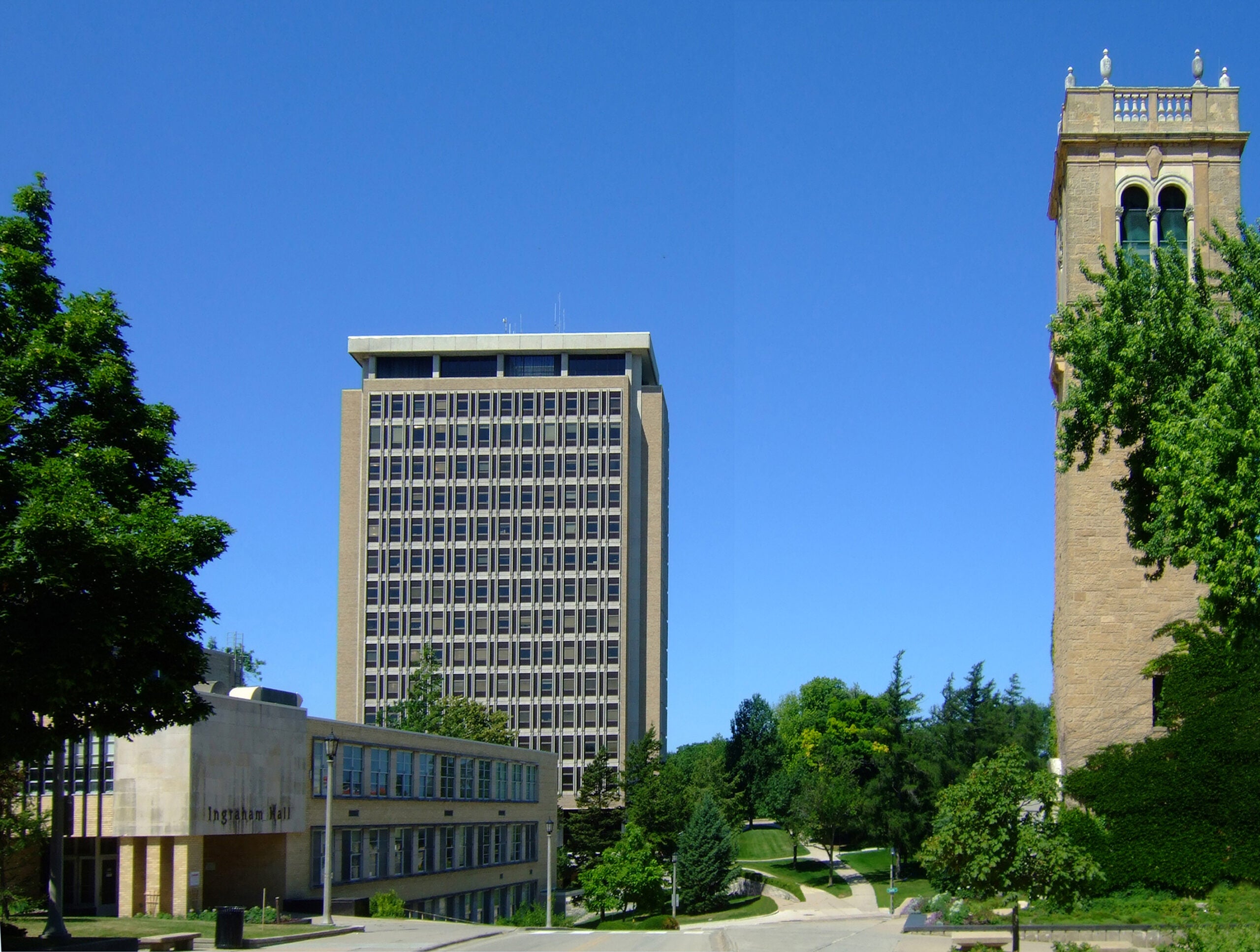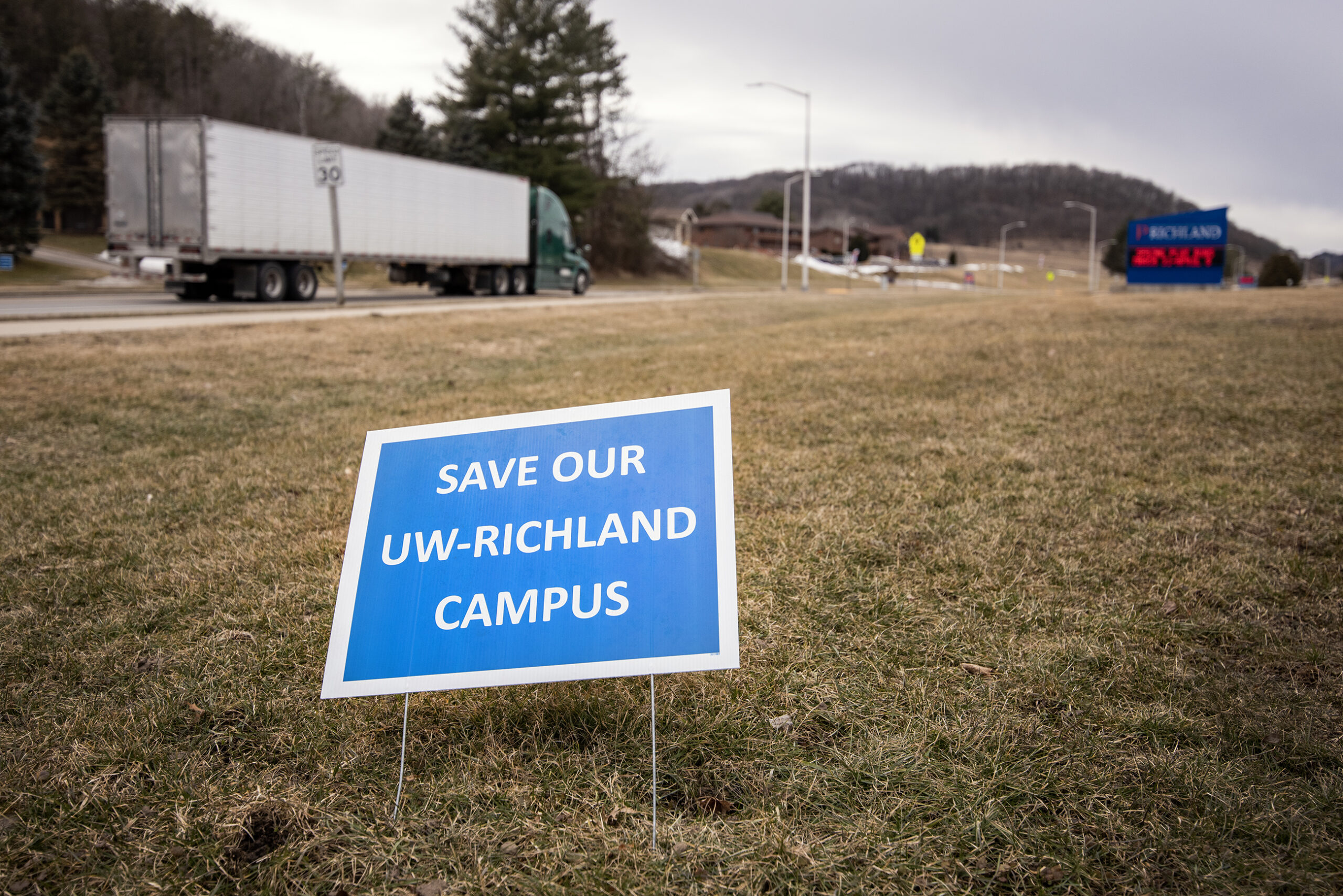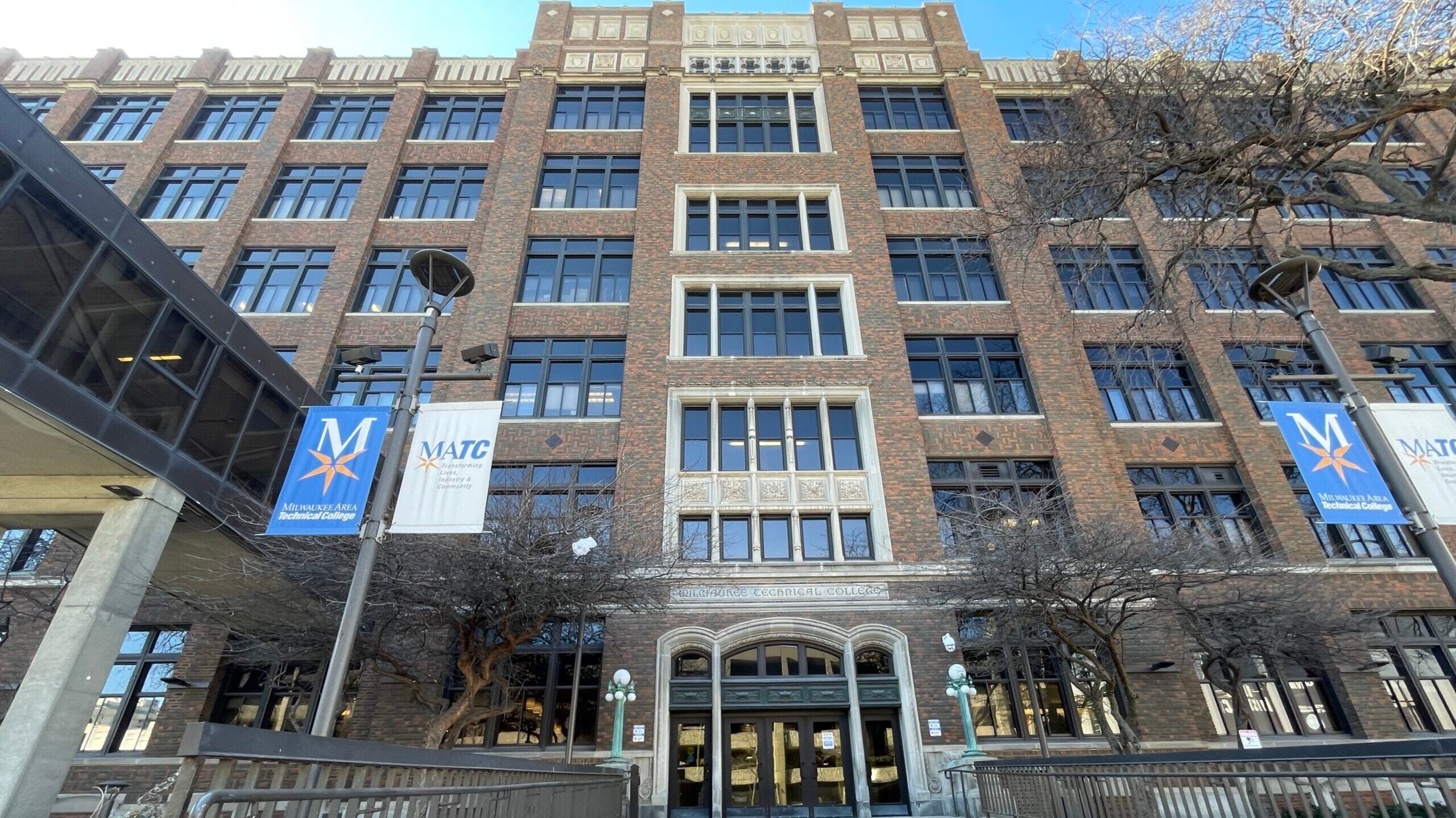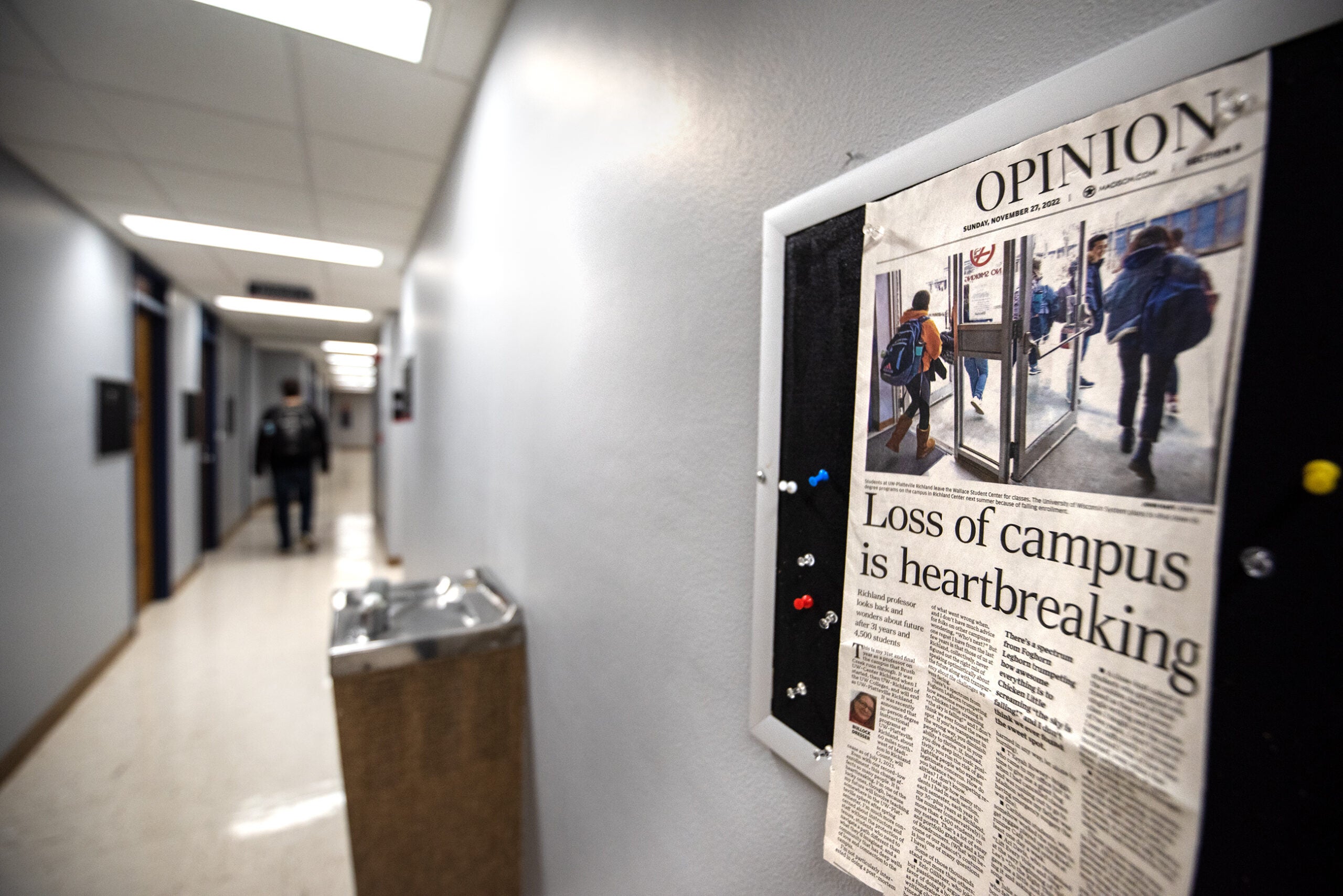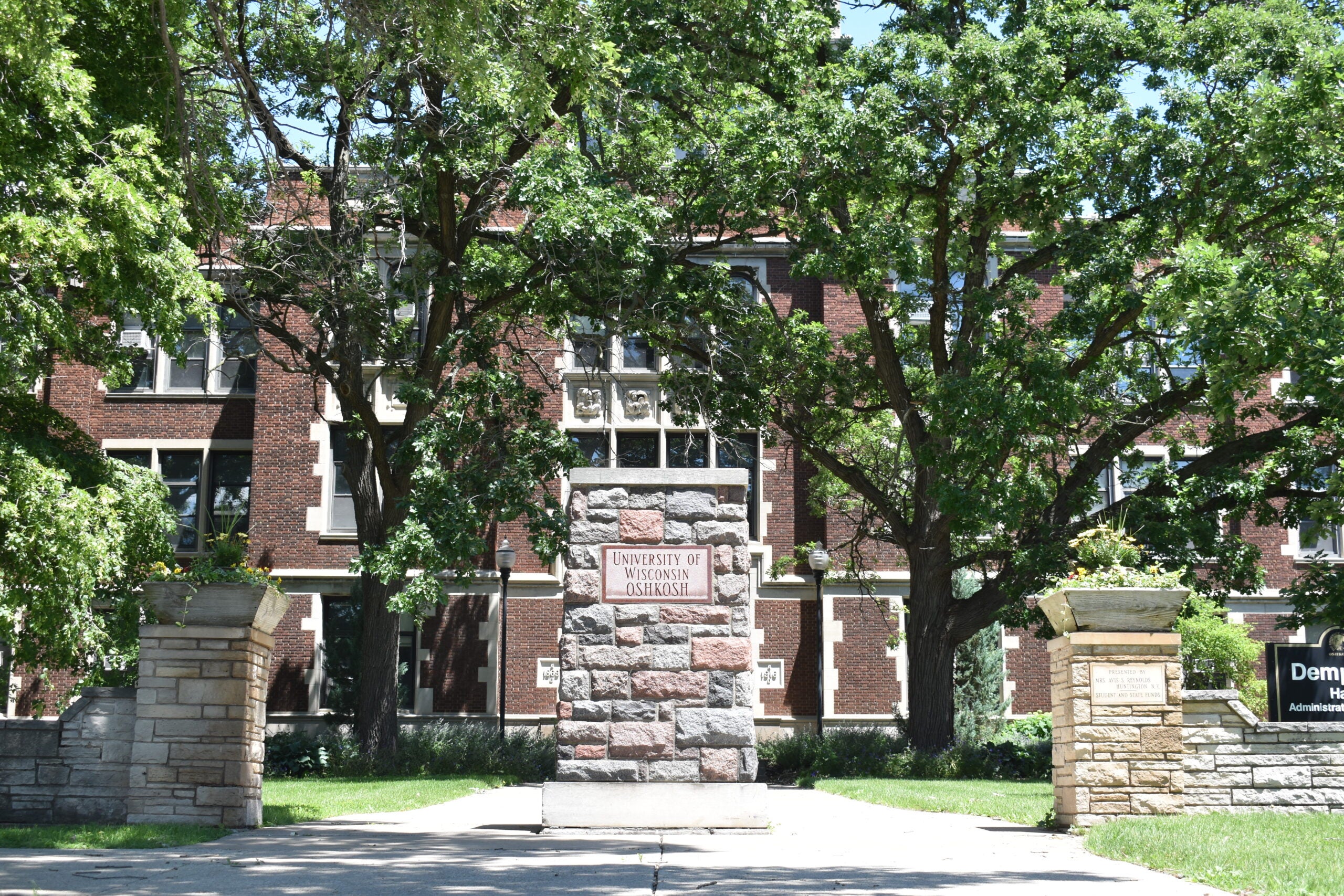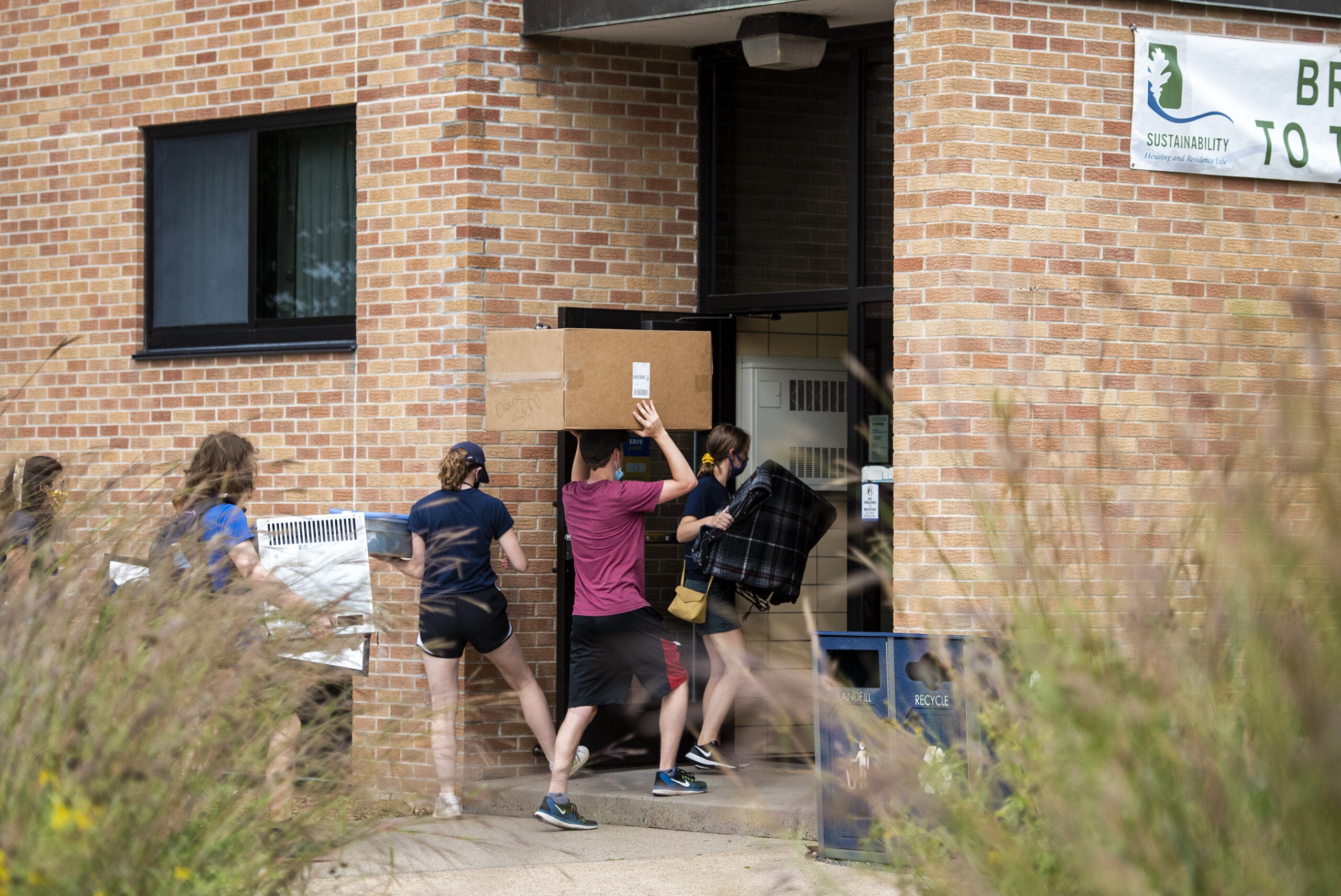Enrollments at University of Wisconsin System’s two-year campuses has declined by 49 percent since 2010, according to new data released by the UW System. In the last year alone, enrollment declined at every two-year branch campus in the state, with UW-Plattevile Richland leading with a 58 percent drop in enrollment compared to 2018 figures.
A UW System press release issued Thursday afternoon focused mostly on enrollment figures throughout the state’s 26 two- and four-year campuses. Systemwide, the UW System saw a 2.6 percent decline in enrollment this fall compared to fall of last year. The press release described the changes as “modest enrollment reductions” and noted that declining enrollment isn’t unique to Wisconsin.
A spokesman for the UW System administration office said staff were declining to comment on the enrollment figures. In the Thursday press release, UW System President Ray Cross said the drop in enrollment wasn’t a surprise.
Stay informed on the latest news
Sign up for WPR’s email newsletter.
“These preliminary enrollment numbers were not unexpected given the demographic trends,” said Cross. “It demonstrates more than ever the need for investing in student success and building the talent pipeline to deliver the graduates Wisconsin needs.”
But enrollment declines between 2018 and 2019 varied widely between campuses.
Enrollments at every two-year branch campus decreased from 2018 to 2019.
UW-Platteville Richland enrolled 155 students this fall compared to 366 in the fall of 2018 — a decline of nearly 58 percent. A spokesman for UW-Platteville said administrators were busy with campus homecoming activities and weren’t able to immediately comment on enrollment data.
UW-Green Bay Sheboygan had a 38 percent decline in enrollment this year compared with last year, with 222 fewer students in 2019.
On the flip side, UW-Green Bay’s main, four-year campus saw a nearly 10 percent increase in enrollments this fall compared to last year. With an additional 715 students in 2019, the increase offset declines of 30 to nearly 40 percent at Green Bay’s branch campuses in Manitowoc, Marinette and Sheboygan, which were merged with UW-Green Bay as part of the 2017 restructuring of the UW System.
In an interview with WPR, Michael Alexander, UW-Green Bay provost and vice chancellor for academic affairs, said when all figures from UW-Green Bay institutions are combined there was a 3.4 percent increase in enrollment. But he said he expects enrollments at their branch campuses to increase as new degree programs are launched at the two-year institutions.
“So, we’re looking at this differently,” said Alexander. “So, we’re looking at ourselves as one university with four campuses. So, it’s going to take a little time for the communities in Marinette, Manitowoc and Sheboygan, for us to be able to message that, for us to be able to get our four-year degrees launched.”
Alexander said UW-Green Bay administrators are looking at creating new degree options in high-demand fields like teaching, nursing and engineering as a way to be more responsive to community needs and drive enrollment.
“There are great options for associate degrees, frankly, that are cheaper than the colleges can provide,” said Alexander. “It’s a very competitive market for associate degrees at the moment in Wisconsin. But we’ve talked to the communities in Marinette, Manitowoc and Sheboygan and each have really important needs that we can fill with four-year degrees.”
At UW-Eau Claire and its branch campus in Barron County, UW System enrollment data show a decline of 346 students, or about 3 percent, fewer in 2019 compared to last year.
But officials at UW-Eau Claire, which adsorbed the former UW-Barron County campus in Rice Lake, say there are nuances in their enrollment figures.
Billy Felz, an executive director of enrollment management for UW-Eau Claire, said as part of the UW System restructuring, students taking online courses through the former UW Colleges and Extension division were moved to online programs at other institutions. For UW-Eau Claire-Barron County, Felz said that meant a spike of 139 students in 2018, which skew the totals. He said, according to their numbers, both campuses only saw a decline of 68 students between 2018 and 2019. Felz also noted that despite having fewer students they’ve seen increases in the number of credits students are taking.
“It means that they’re working at completing their graduation in a timely fashion, but more credits also then means more tuition for each of those campuses,” Felz said. “So again, even though we have less students they are taking more classes, which means more credits.”
Declining enrollment at the former UW Colleges was cited as a main driver of the restructuring when Cross announced in October 2017 that the state’s two-year colleges would be merged with its four-year universities. At the time enrollment at all UW College campuses had already dropped by around 19 percent compared to 2010 figures.
State Rep. Dave Murphy, R-Greenville, advocated for the UW restructuring. Murphy said there were bright spots in the enrollment data with enrollments going up at UW-Madison, UW-Green Bay And UW-Superior, though he said, “Obviously the two-year campuses are really struggling.”
“And there are campuses that may have to be closed in the future, and I think you need to keep it in mind,” Murphy said. “Is it a little premature? Maybe, that we need to hold off and continue to look at it a little bit. But I think some time in the very near future some tough decisions might have to be made on those things.”
State Rep. Katrina Shankland, D-Stevens Point, disagreed with Murphy’s outlook.
“I don’t think we should ever put it on the table,” Shankland said. “If you have that conversation about closing campuses, you’re basically relegating entire populations and communities in Wisconsin to less access to higher education and less opportunity as a result.”
Instead, Shankland suggested state investments in the UW System that she said would set universities up for success.
In general, enrollments at two-year technical and community colleges closely follow the health of the economy.
Nathan Grawe, an economist with Carleton College in Minnesota, said earlier this month that two-year campuses often see “much more volatility in enrollments” when the economy is doing well. Grawe has also predicted that the number of college age students in the Midwest will fall by 15 to 20 percent by 2026 because of a drop in birthrates in 2008.
Enrollment declines at UW System’s two-year campuses have been similar to declines seen at Wisconsin technical colleges since 2010. Enrollments within the Wisconsin Technical College System fell by 20 percent between 2010 and 2017.
Researcher Sarah Kemp, at the UW-Madison Applied Population Laboratory, said high school enrollments have declined by 4.9 percent in the last 10 years.
Editor’s note: Wisconsin Public Radio is a service of the University of Wisconsin-Madison and the Wisconsin Educational Communications Board.
Wisconsin Public Radio, © Copyright 2025, Board of Regents of the University of Wisconsin System and Wisconsin Educational Communications Board.
